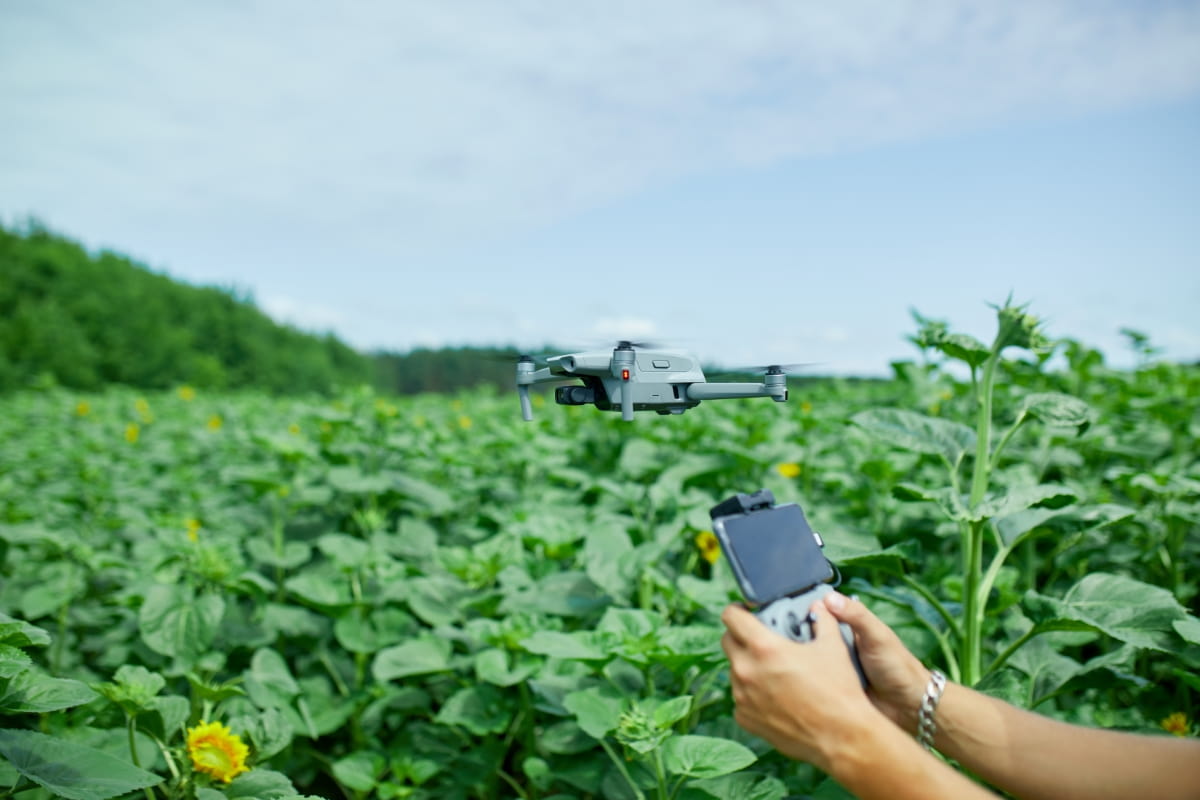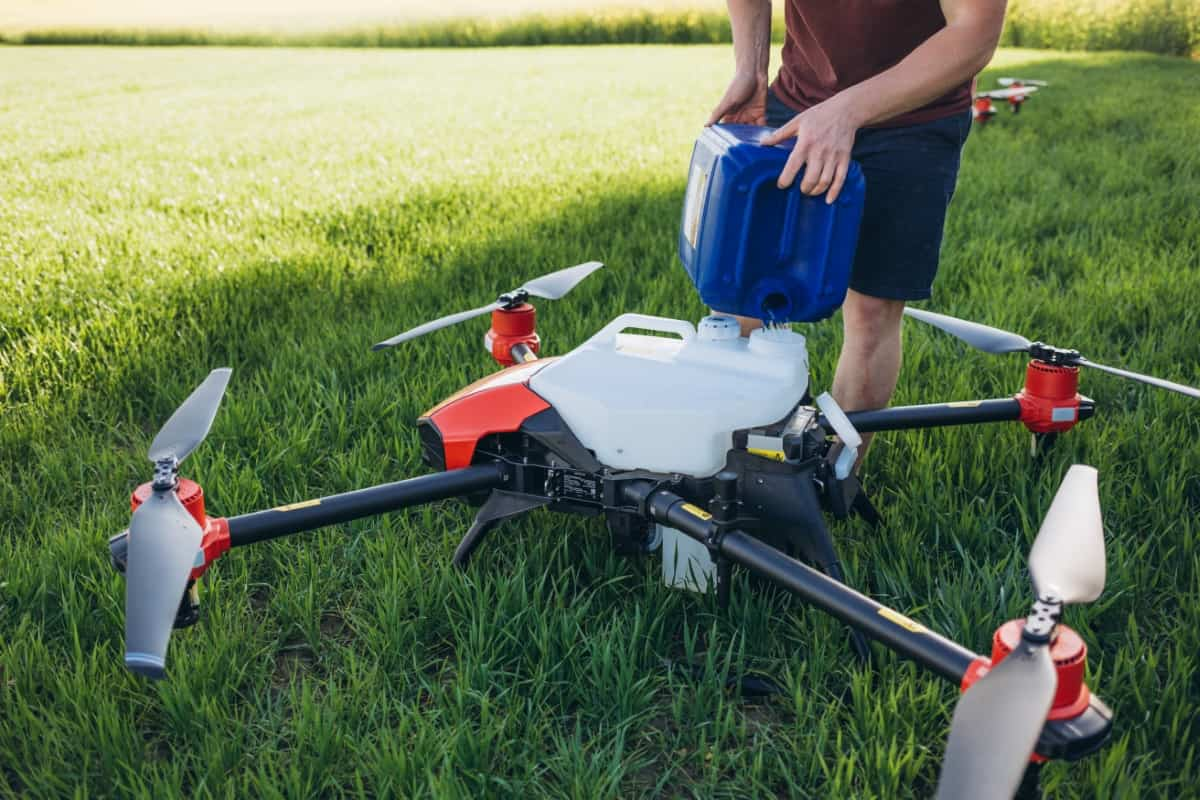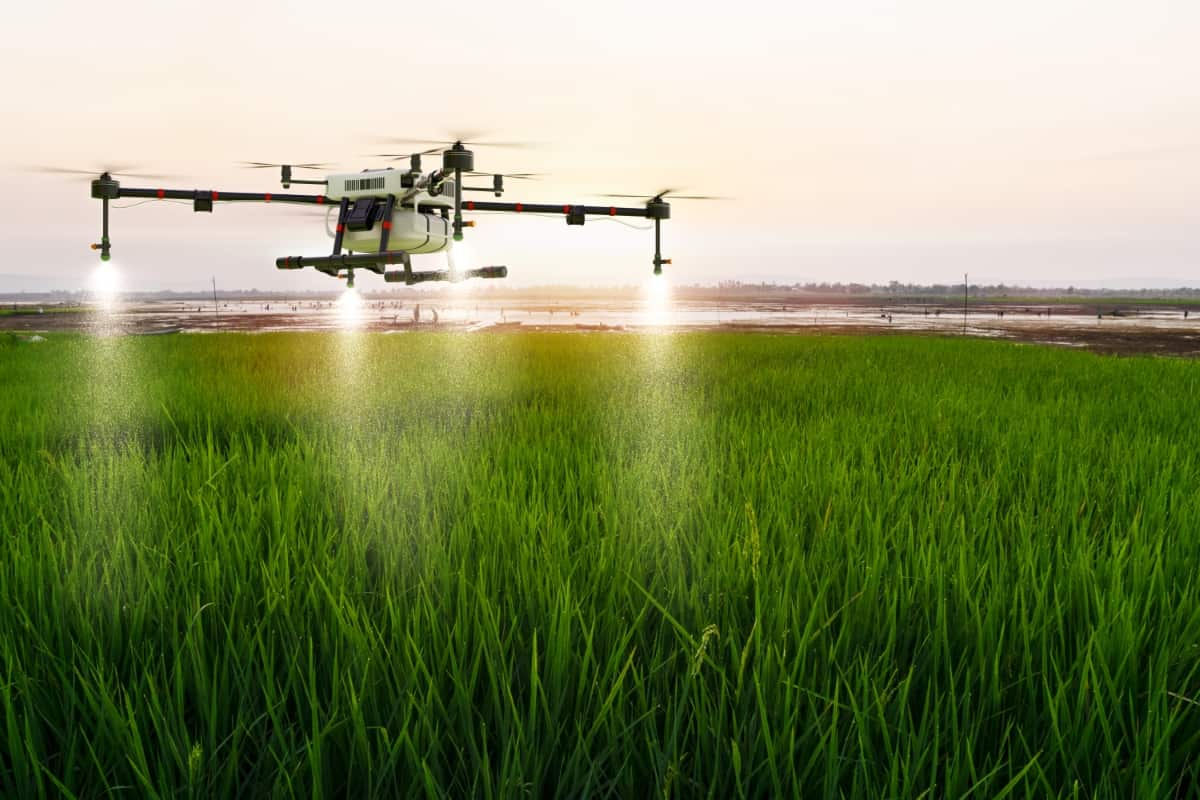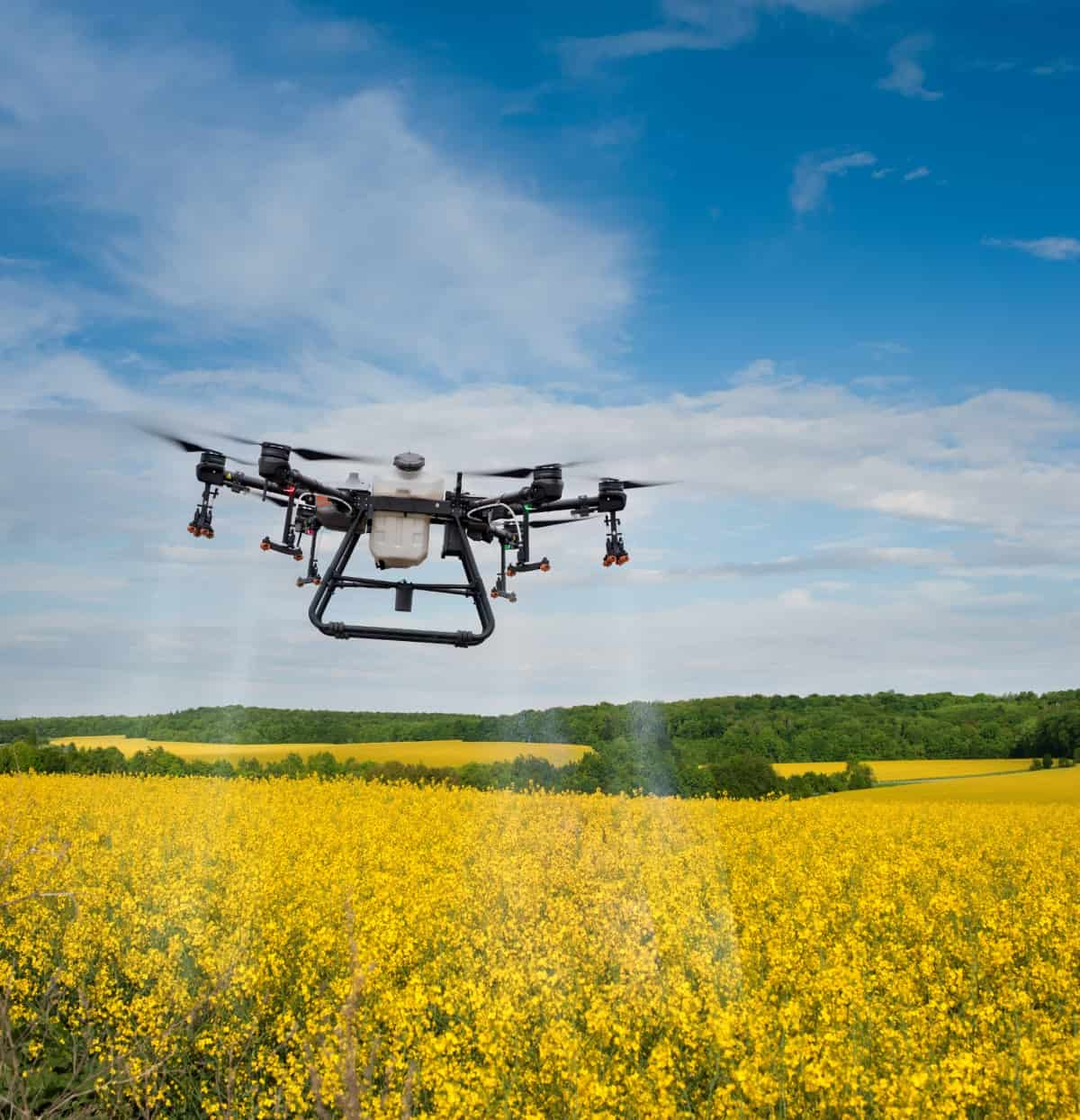With artificial intelligence leading the way, farmers now have access to advanced techniques that revolutionize how we detect and control pests. AI-driven pest control refers to the application of artificial intelligence technology in identifying, managing, and controlling pests in agricultural settings.

AI Driven Pest Control
How AI-Driven Pest Control is Revolutionizing Farming
AI-driven pest control has emerged as a game changer in the agricultural industry. AI systems can analyze images captured by drones or cameras placed in fields, enabling farmers to detect any signs of infestation or crop damage quickly. Another main advantage of AI-driven pest control is its potential for precision agriculture. By leveraging machine learning algorithms, farmers can target specific areas affected by pests instead of treating entire fields.
This targeted approach not only reduces pesticide usage but also minimizes environmental impact while maximizing crop yield. Furthermore, AI-driven pest control systems are continuously learning and adapting based on new data inputs. As these systems gather more information over time, their accuracy improves significantly. This adaptive nature enables farmers to stay one step ahead of evolving pest populations and implement proactive strategies for long-term crop protection.
The Role of Artificial Intelligence in Sustainable Pest Management
AI (Artificial intelligence) is revolutionizing the method we detect and control pests, offering more efficient and environmentally friendly solutions. Additionally, AI-powered sensors can monitor environmental conditions such as temperature, humidity, and soil moisture levels. Moreover, AI facilitates precision agriculture practices by integrating data from various sources like weather forecasts, crop health monitoring systems, historical records, and satellite imagery.
AI-driven pest management systems enable continuous monitoring through IoT devices such as smart traps or automated insect counting machines. These devices collect data on pest populations over time, which helps create predictive models for better decision-making.
The Breakthroughs in AI-Powered Pest Detection and Control
One breakthrough in AI-powered pest detection is the use of computer vision. By analyzing images or video footage from cameras placed throughout an agricultural area, AI algorithms can identify specific pests and differentiate them from beneficial insects or other objects. Another exciting development is the use of machine learning algorithms to predict pest outbreaks before they happen.
By analyzing historical data on climate conditions, crop health, and previous pest incidents, AI models can forecast when certain pests are likely to emerge or thrive. Furthermore, AI-powered drones equipped with sensors and cameras have become essential tools in detecting pests efficiently over large areas.
Integrating AI into Pest Control Strategies for Enhanced Farm Health
Through sensors and drones equipped with advanced imaging technology, farms can gather real-time data about their crops and potential pest threats. This data is processed using machine algorithms to identify patterns and predict future pest outbreaks. AI takes things a step further by providing targeted solutions for controlling pests.
In case you missed it: How to Use Cedar Oil for Pest Control: DIY Homemade Recipe of Cedar Oil Insecticide for Bug Repellent

AI algorithms can determine the most effective treatments to combat specific pests while minimizing environmental impact. Moreover, integrating AI into pest control strategies also allows for better monitoring of overall farm health. This proactive approach enables timely interventions that not only protect crops but also optimize resource usage by applying inputs only where necessary – saving both money and reducing chemical residues in food products.
AI and IoT in Agriculture: Transforming Pest Management with Smart Solutions
The integration of AI and IoT technologies into agriculture has brought about remarkable advancements in pest management. With this valuable insight, farmers can take proactive measures to address pest issues promptly. Moreover, by combining AI with IoT devices such as smart traps or drones equipped with cameras, farmers can remotely monitor their fields for signs of infestation or crop damage.
The captured images or videos are analyzed using computer vision technology powered by machine learning algorithms to identify specific pests or diseases accurately. As a result of these intelligent solutions, farmers not only save time but also reduce costs associated with manual surveillance efforts and excessive pesticide usage.
Precision Agriculture: Leveraging AI for Targeted Pest Control and Reduced Environmental Impact
Precision Agriculture, also known as smart farming or digital agriculture, is transforming the way we approach pest control and environmental impact in agriculture. By leveraging AI technology, farmers can now implement targeted pest control strategies that not only reduce crop damage but also minimize the use of harmful pesticides. With precision agriculture, farmers can collect real-time data from various sources such as drones, satellite imagery, and sensors placed throughout their fields.
By detecting pests at an early stage, farmers can take immediate action and apply specific treatments only where necessary. AI-powered systems are capable of continuously monitoring crops for signs of distress or disease. By implementing precision agriculture techniques powered by AI-driven pest control solutions, farmers can significantly reduce their reliance on chemical pesticides. It reduces chemical exposure risks for farm workers who handle these pesticides directly.
The Impact of Machine Learning on Pest Control
Machine learning in pest control has emerged as a game-changer in the field. By harnessing the power of data and algorithms, machine learning enables us to tackle pest infestations with unprecedented accuracy and efficiency. By feeding historical data on pest behavior, weather patterns, crop growth, and other relevant factors into sophisticated algorithms, machine learning models can identify patterns and make predictions about future pest outbreaks. This enables farmers to take measures and implement targeted pest control strategies.
Challenges of Implementing AI-Based Pest Control
The major challenge of implementing AI-based pest control is the initial cost involved in setting up an AI-driven pest control system. Developing and deploying such systems requires significant financial investment, which might deter some farmers from adopting this technology. Another challenge lies in gathering accurate and reliable data for training AI models. The effectiveness of these systems depends on having access to high-quality data regarding pests, their behavior, and crop conditions.
In case you missed it: Organic Pest Control for Indoor Plants: Eco-Friendly Pest Management for Indoor Garden

However, collecting and maintaining large datasets can be time-consuming and resource-intensive. Additionally, integrating AI into existing farming operations may require changes in infrastructure and workflows. Farmers would need to invest in compatible hardware and software solutions while also ensuring that employees are trained to use these technologies effectively.
AI’s Role in Predictive Pest Control and Crop Protection Strategies
AI can analyze vast data to predict and identify potential pest outbreaks before they occur. This predictive approach enables farmers to take proactive measures to protect their crops without relying on harmful chemicals. By detecting early signs of infestation, farmers can implement targeted interventions like releasing beneficial insects or deploying trap systems at the right time. AI-driven technologies enable real-time monitoring and data collection from sensors placed throughout fields.
By implementing predictive pest control strategies with AI technology, farmers not only reduce reliance on chemical pesticides but also minimize crop losses due to pests. This has significant economic benefits for farmers while promoting sustainable farming practices that prioritize environmental well-being. The integration of AI into predictive pest control and crop protection strategies holds great promise for the future of agriculture. AI algorithms will become increasingly accurate in predicting pests’ behavior and developing effective countermeasures.
Frequently Asked Questions (FAQ) on AI-Driven Pest Control
How Does AI-Driven Pest Control Work?
AI-driven pest control utilizes advanced algorithms and machine learning techniques to detect, identify, and eliminate pests. By analyzing vast amounts of data, such as patterns of behavior and environmental factors, the AI system can accurately identify the presence of pests in real time.
Can AI-Driven Pest Control Completely Replace Human Intervention?
No, it cannot entirely replace humans in this field just yet. While AI helps with identification and monitoring tasks, implementing effective strategies for eradication still requires human expertise.
What Types of Pests Can Be Detected Using AI-Driven Pest Control Technology?
AI-powered systems are versatile enough to detect a wide range of common household pests like rodents (mice/rats), insects (ants/termites), spiders, etc., making them suitable for various residential settings.
Are There Any Limitations to Using AI in Pest Control?
While highly effective overall, like any technology, there are some limitations to consider with AI-driven solutions for pest control. Factors such as weather conditions or equipment failures may affect accuracy temporarily; however, ongoing advancements continue to improve reliability.
In case you missed it: How to Use Tea Tree Oil for Pest Control: DIY Homemade Recipe of Tea Tree Oil Insecticide Bug Repellent

Conclusion
AI-driven pest control relies on sophisticated machine-learning models that are trained to recognize patterns associated with different types of pests. By analyzing data gathered from sensors, drones, and other IoT devices installed across farms, these models can identify specific patterns or behaviors that indicate the presence or likelihood of pests.
- Deworming Schedule for Dogs/Puppies: A Beginners Guide
- How to Prevent and Control Parasites in Goats
- Beneficial Insects in Pest Management
- Natural Solutions for Pest Control in Flower Gardens
- Types of Fungicides Used in Agriculture
- Common Issues in the Fruit Development Stage of Pomegranate Farming
- Fruit Development Issues in Papaya: Easy Solutions and Treatment
- Soil-Borne Diseases and How to Protect Your Plants
- Practices to Prevent Disease Spread in the Garden